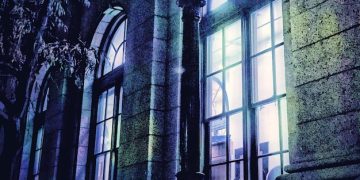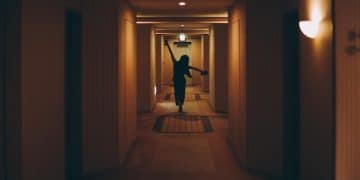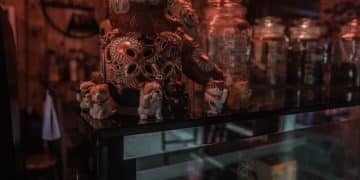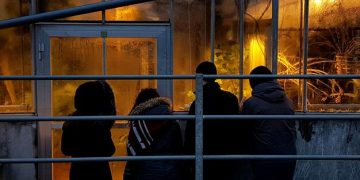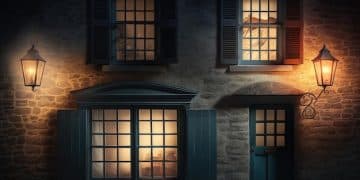Haunted House Tourism Soars: A 30% Revenue Surge Amidst Paranormal Craze
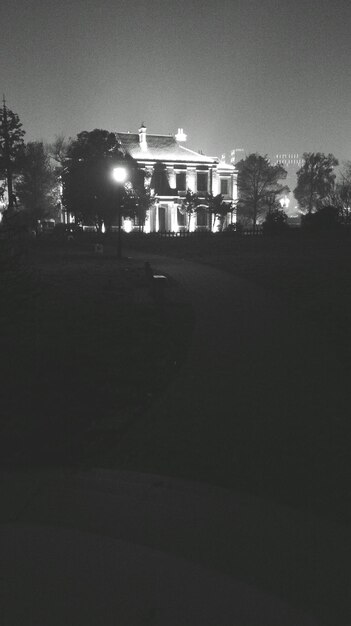
Haunted house tourism is experiencing a significant boom, with the industry reporting a 30% increase in revenue driven by heightened interest in paranormal experiences and thrill-seeking adventures.
The allure of the supernatural has always captivated the human imagination, and now, it’s transforming the tourism industry.
Haunted house tourism is experiencing an unprecedented surge, with a remarkable 30% increase in revenue, fueled by an ever-growing fascination with paranormal phenomena.
The Growing Appeal of Haunted House Tourism
Haunted house tourism is more than just a seasonal fad; it’s a burgeoning industry driven by a blend of history, mystery, and the thrill of the unknown. This unique form of tourism attracts a diverse demographic, from paranormal enthusiasts to adventure-seekers looking for an adrenaline rush.
The surge in popularity can be attributed to several factors, including the increasing accessibility of paranormal content through TV shows, movies, and online platforms. This exposure has normalized and even glamorized the pursuit of the supernatural, leading more people to seek out real-life experiences.
Psychological Factors Behind the Attraction
Understanding why people are drawn to haunted houses involves delving into the psychology of fear and excitement. The controlled environment of a haunted attraction allows individuals to confront their fears in a safe and thrilling way. The adrenaline rush experienced during these encounters can be addictive, leading visitors to return for more.
Moreover, haunted houses offer a sense of community and shared experience. Groups of friends or family members often visit these attractions together, creating lasting memories and strengthening bonds.
- Thrill-Seeking: The desire for excitement and adrenaline.
- Curiosity: A fascination with the unknown and the supernatural.
- Social Bonding: Sharing a unique and memorable experience with others.
- Catharsis: Confronting and overcoming fears in a controlled environment.
In conclusion, haunted house tourism is flourishing as it taps into the primal human curiosity about the paranormal, providing a unique blend of entertainment, history, and psychological thrill. The industry’s growth reflects a societal shift toward embracing the unknown and seeking out experiences that challenge our perceptions of reality.

Economic Impact of the Paranormal Industry
The 30% revenue increase in haunted house tourism signifies a substantial economic impact, benefiting not only attraction owners but also surrounding communities. This surge translates into job creation, increased spending at local businesses, and a boost to tourism infrastructure.
Beyond the haunted houses themselves, related industries such as costume shops, special effects companies, and paranormal investigation services also experience growth. The ripple effect extends to hotels, restaurants, and transportation services, making haunted house tourism a significant contributor to local economies.
Job Creation and Local Business Growth
Haunted houses typically require a large staff to operate, from actors and makeup artists to set designers and ticket vendors. This creates numerous seasonal job opportunities, particularly for students and performers. The influx of tourists also benefits local businesses, as visitors spend money on food, lodging, and souvenirs.
Furthermore, the demand for specialized services like paranormal investigations and ghost tours increases, providing opportunities for entrepreneurs and small businesses to cater to the growing interest in the supernatural.
- Seasonal Employment: Creating jobs for actors, artists, and support staff.
- Increased Revenue: Boosting local businesses through tourist spending.
- Infrastructure Development: Encouraging investment in tourism-related facilities.
- Entrepreneurial Opportunities: Fostering new businesses in paranormal investigation and related fields.
In conclusion, the economic impact of haunted house tourism is significant and far-reaching, contributing to job creation, local business growth, and overall economic development. The industry’s continued expansion promises further opportunities for investment and prosperity.
Exploring the Most Popular Haunted Attractions in the US
The United States boasts a wide array of haunted attractions, each with its unique history, theme, and level of scariness. From historic mansions with documented paranormal activity to elaborate theatrical productions designed to terrify, there’s a haunted experience to suit every taste.
Some of the most popular haunted attractions in the US include the Eastern State Penitentiary in Philadelphia, known for its intense paranormal activity and immersive tours, and the Winchester Mystery House in San Jose, California, a sprawling mansion with a bizarre history and alleged ghostly inhabitants.
A Glimpse into the Eerie World of Winchester Mystery House
The Winchester Mystery House isn’t just a tourist destination; it’s a time capsule filled with architectural oddities and an aura of eerie mystique. Sarah Winchester, the widow of gun magnate William Winchester, continuously expanded the house for nearly 40 years, driven by the belief that she was haunted by the spirits of those killed by Winchester rifles.
The result is a sprawling labyrinth of staircases that lead nowhere, doors that open onto walls, and countless other bizarre features, all contributing to the house’s reputation as one of the most haunted places in America.
- Eastern State Penitentiary (Philadelphia, PA): Known for its intense paranormal activity.
- Winchester Mystery House (San Jose, CA): A bizarre mansion with a haunted history.
- The Queen Mary (Long Beach, CA): A historic ocean liner with numerous ghost stories.
- Waverly Hills Sanatorium (Louisville, KY): A former tuberculosis hospital with a dark past.
In summation, exploring the most popular haunted attractions in the US offers a glimpse into the diverse and captivating world of paranormal tourism. These locations provide unique experiences that blend history, mystery, and the thrill of the supernatural, attracting visitors from around the globe.
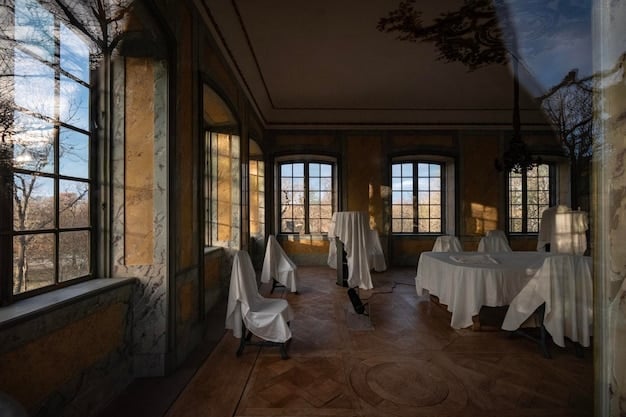
The Role of Social Media in Promoting Haunted House Tourism
Social media plays a crucial role in the booming popularity of haunted house tourism, serving as a powerful platform for promotion, information sharing, and community building. Through platforms like Instagram, TikTok, and Facebook, haunted attractions can reach a wide audience, showcase their unique features, and generate excitement and anticipation.
User-generated content, such as photos, videos, and reviews, is particularly influential in shaping perceptions and driving attendance. Positive reviews and visually appealing content can create a buzz around an attraction, while negative feedback can serve as a valuable learning opportunity for operators.
The Power of Influencer Marketing
Collaborating with social media influencers and paranormal enthusiasts can significantly boost the visibility and credibility of a haunted attraction. Influencers can provide firsthand accounts of their experiences, create engaging content, and encourage their followers to visit, thereby driving attendance and generating positive word-of-mouth.
Moreover, social media provides a direct channel for communication between attractions and their audience, allowing for real-time updates, interactive contests, and personalized recommendations.
- Visual Promotion: Sharing photos and videos of the attraction’s scariest features.
- User-Generated Content: Encouraging visitors to share their experiences and reviews.
- Influencer Marketing: Partnering with influencers to promote the attraction to a wider audience.
- Community Building: Creating a community of paranormal enthusiasts and haunted house fans.
In summary, social media is a vital tool for promoting haunted house tourism, enabling attractions to reach a wider audience, generate excitement, and build a loyal following. By leveraging the power of visual content, user-generated reviews, and influencer marketing, haunted attractions can effectively market themselves and drive attendance.
Safety Measures and Ethical Considerations
While haunted house tourism offers thrilling and immersive experiences, it’s important to prioritize safety and ethical considerations. Attraction operators have a responsibility to ensure the well-being of their visitors and staff, while also respecting the historical and cultural significance of the locations they use.
Safety measures should include well-lit pathways, clear signage, trained staff, and emergency protocols. Ethical considerations involve respecting the stories and legends associated with the haunted locations, avoiding exploitation of sensitive topics, and ensuring that the experiences are respectful and non-harmful.
Ensuring a Safe and Respectful Experience
Attraction operators should conduct thorough risk assessments, implement safety protocols, and provide clear guidelines for visitors. It’s also important to be mindful of cultural sensitivities and avoid perpetuating harmful stereotypes or misinformation.
Furthermore, ethical considerations extend to the use of authentic haunted locations. Operators should obtain proper permissions, respect historical artifacts, and avoid damaging or altering the properties in any way.
- Risk Assessments: Conducting thorough assessments to identify and mitigate potential hazards.
- Safety Protocols: Implementing clear safety guidelines and emergency procedures.
- Ethical Storytelling: Respecting the stories and legends associated with the locations.
- Cultural Sensitivity: Avoiding the exploitation of sensitive topics and harmful stereotypes.
In closing, safety measures and ethical considerations are crucial for ensuring the sustainable growth and positive reputation of haunted house tourism. By prioritizing the well-being of visitors and respecting the historical and cultural significance of the locations, attraction operators can create safe, enjoyable, and meaningful experiences for all.
Future Trends in Haunted House Tourism
The future of haunted house tourism appears bright, with several emerging trends poised to shape the industry in the coming years. These trends include the integration of virtual reality (VR) and augmented reality (AR) technologies, the rise of immersive and interactive experiences, and the growing demand for personalized and customized adventures.
VR and AR technologies can enhance the immersive nature of haunted attractions, allowing visitors to experience realistic and terrifying scenarios from the comfort of their own homes. Immersive and interactive experiences, such as escape rooms and live-action role-playing games, offer a more engaging and participatory form of entertainment.
The Rise of Personalized Paranormal Adventures
As technology advances and consumer preferences evolve, the demand for personalized and customized experiences will continue to grow. Haunted attractions may offer tailored adventures based on individual preferences, such as the level of scariness, the type of paranormal activity, or the historical period.
Moreover, the integration of data analytics and artificial intelligence (AI) can enable operators to better understand visitor behavior, personalize marketing messages, and optimize the overall experience.
- VR and AR Integration: Enhancing immersion and realism through virtual and augmented reality technologies.
- Immersive Experiences: Creating interactive and participatory adventures.
- Personalized Customization: Catering to individual preferences and interests.
- Data Analytics and AI: Optimizing the visitor experience through data-driven insights.
In conclusion, the future of haunted house tourism is characterized by innovation, technology, and a focus on personalized experiences. By embracing emerging trends and catering to evolving consumer preferences, the industry can continue to thrive and provide thrilling and memorable adventures for years to come.
| Key Point | Brief Description |
|---|---|
| 👻 Revenue Surge | Haunted tourism sees a 30% revenue increase. |
| 💼 Economic Impact | Boosts local economies, creating jobs and revenue. |
| 📱 Social Media | Crucial for promotion and engagement with fans. |
| 🔮 Future Trends | VR/AR and personalized experiences are on the rise. |
Frequently Asked Questions
▼
Haunted house tourism is popular due to the thrill of experiencing fear in a controlled environment, combined with a fascination for the paranormal and the opportunity for social bonding.
▼
It significantly boosts local economies through job creation, increased spending at local businesses like restaurants and hotels, and encourages investment in tourism infrastructure.
▼
Safety measures include well-lit pathways, clear signage, trained staff, emergency protocols, and risk assessments to ensure visitor well-being and prevent accidents within the attraction.
▼
Social media serves as a powerful tool for promotion through visual content, user-generated reviews, and influencer marketing, helping attractions reach wider audiences and build fan communities.
▼
Future trends include VR/AR integration for enhanced immersion, personalized and customized spooky adventures, and immersive and interactive experiences like escape rooms with paranormal themes.
Conclusion
In conclusion, the haunted house tourism industry is experiencing substantial growth, driven by a blend of paranormal interest, thrill-seeking, and social media promotion. With careful attention to safety and continued innovation, the industry is poised for sustained success.
